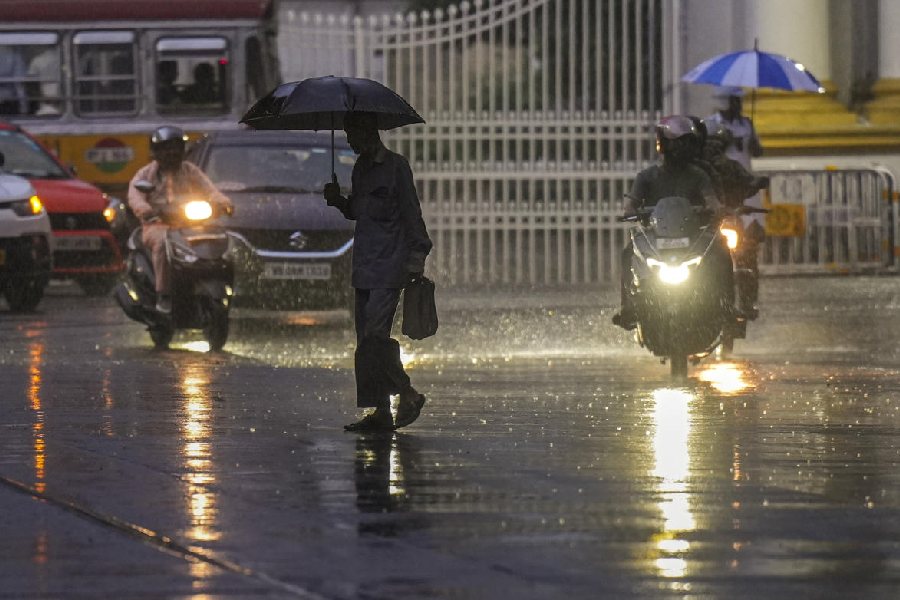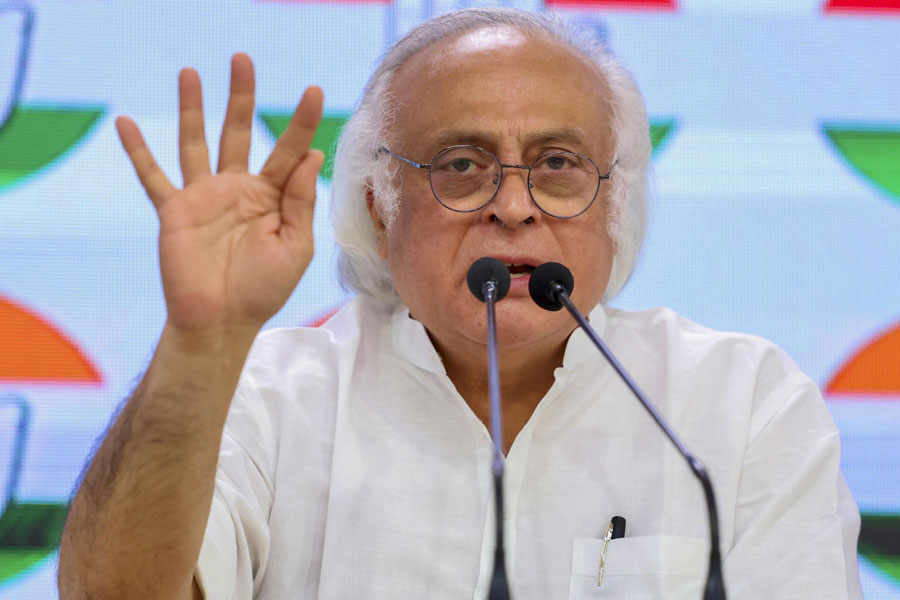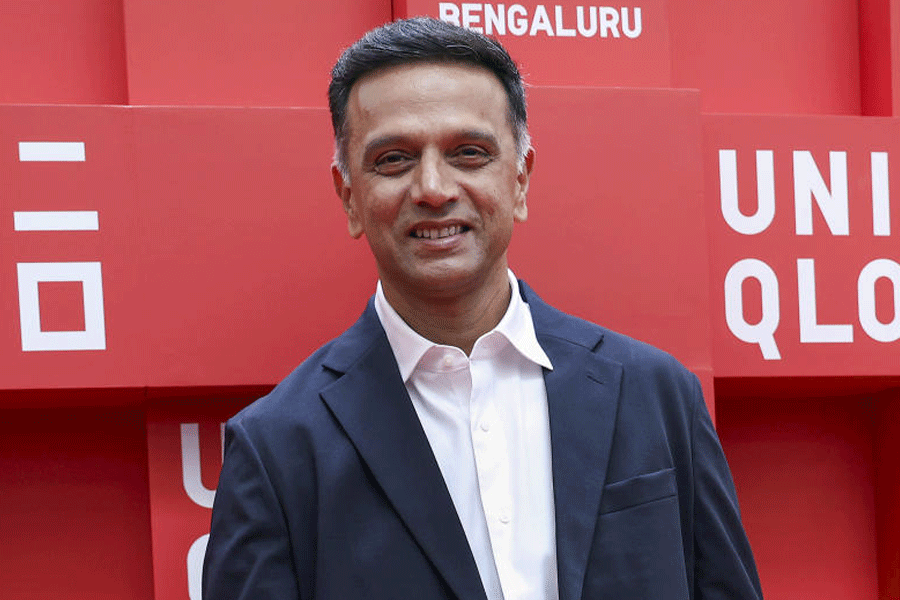 |
| STEP BY STEP: Children are put through the paces of folk dance at the three-day workshop on Bengal’s art forms. Picture by Anindya Shankar Ray |
For the 70 youngsters who attended the three-day workshop titled ‘Back to Roots’, organised at Oxford Bookstore Junior on Park Street, it was a welcome break from the pressure of studies and the wilting heat.
It was held from April 17 to 19, by Banglanatok.com, that works to create awareness about Bengal’s folk forms.
The workshop introduced the art forms of rural Bengal, including the chhau dance of Purulia, fakiri and baul music and folk theatre to children from ages six to 12, from schools like Apeejay School, The Heritage, Mahadevi Birla Girls’ Higher Secondary School and Calcutta Boys’.
On Day I, a documentary on jhumur folk music, Journey of Jhumur, was screened for the children, after which they were treated to live fakiri and baul songs by artists from Purulia. They also participated in an interactive session of theatre games that included acting, music, mask-making and dance.
This was the first encounter with jhumur for Anish Dasgupta, a Class III student of St James. “I loved the film. But I most enjoyed it when the songs were performed live for us later,” he said.
“Fakiri songs are better than those of Bollywood!” quipped Abhijoy Halder, a Class VII student of St James School.
The second day’s attraction was a chhau performance, followed by an interactive session with dancer Jagannath Mahanto from Purulia. Mahanto put the participants through theatre games for voice intonation, facial expressions and dialogue delivery.
The kids got to play their part too, donning chhau masks and performing an act by themselves, the girls dressed as Kartik and the boys as the buffalo demon, Mahishasura.
On the final day, the children put up four performances based on what they had learnt, on subjects like environment and friendship.
Banglanatok has been using theatre to reach out to people in the rural areas of Bengal, Bihar and Maharashtra. “We have organised such workshops earlier in schools and colleges and kids always take to it eagerly. It teaches them about their heritage in a way that books can’t”, said theatre personality Sushanta Mukherjee, the guide for the kids from Banglanatok.com.
 |
| A section of the audience at the lecture on Indian astronomy. Picture by Bishwarup Dutta |
It’s all in the stars
Ancient Indian astronomy, one of the oldest astronomical systems in the world, was the subject of discussion at Birla Industrial and Technological Museum (BITM) on April 17 as part of its ongoing celebrations to mark the International Year of Astronomy.
Several students from the higher classes of Modern High School for Girls, Frank Anthony Public School and MC Kejriwal Vidyapith, Howrah, attended the hour-long lecture by Professor Pradip Kumar Mazumdar at the BITM auditorium on Friday afternoon. A professor of vedic science at Rabindra Bharati University, Mazumdar began by introducing students to old astronomy books written by Indian mathematicians to calculate the position of stars and planets.
“While the Brahmasphutasiddhanta, written by Aryabhatta, was a text book that blended both astronomy and algebra, Bhaskaracharya, who continued the mathematical tradition of Brahmagupta, wrote Siddhanta Siromani,” he explained.
Pointing at the sketch of a constellation of stars as observed in the Vedic age, Mazumdar spoke about the origin of their Indian names: “Each star is named after a deity. The first star is Asvini, followed by Bharani, Krittika, Rohini, Mrigasirsa, Magha, Svati, Visakha and Anuradha.”
He went on to explain how Brahmagupta, in 599 AD, had contradicted Aryabhatta’s theory of the rotation of earth.
“Most of the astronomical conceptions on stars, planets, their distances from the moon and the sun were accurately calculated by ancient mathematicians and can be found in the Indian Vedic literature,” he said. The floor was then thrown open to students who were curious for answers to questions like the meaning of asterism or if the universe had any limits.
“The lecture dealt with concepts we don’t find in textbooks. But I would have liked to know what ancient astronomy has to say about the origin of the universe,” said Supriyo Sur, a Class XII student of Frank Anthony Public School.
Mohua Das











